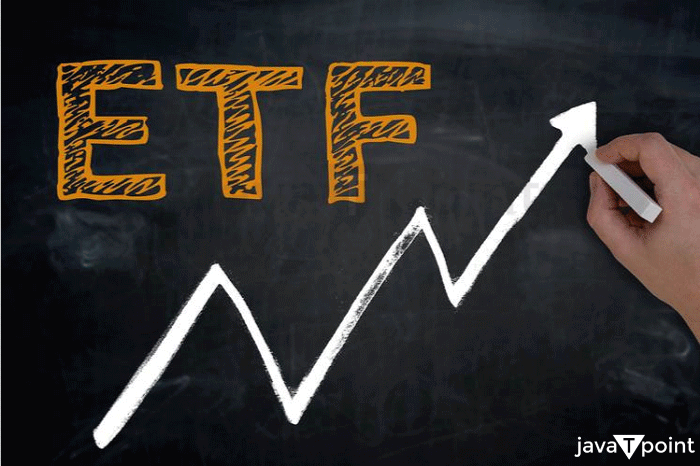Actively Managed ETF: Meaning, Overview, LimitationsThe Actively Managed Exchange-Traded Fund (ETF), a new form of investment instrument, has emerged in the financial sector. The characteristics of traditional mutual funds and ETFs are combined to create actively managed ETFs, which give investors access to the potential advantages of active management within the confines of an ETF. This post will examine the definition, general outline, and restrictions of actively managed ETFs. 
What is an Actively Managed ETF?Investment funds that combine the characteristics of conventional mutual funds and exchange-traded funds are known as actively managed exchange-traded funds or actively managed ETFs. Actively Managed ETFs are actively supervised by portfolio managers instead of passively managed ETFs, which seek to mimic the performance of a specific index. To outperform the market or accomplish particular investment objectives, these managers base their selection of stocks and asset allocation decisions on behalf of their research and analysis. Investors could gain from active management through actively managed ETFs, including access to professional portfolio managers' knowledge and the chance to produce better outcomes. Additionally, they also provide the benefits of ETFs, including intraday liquidity, potential tax efficiency, and lower expense ratios than conventional mutual funds. Actively Managed ETFs are known for their transparency, which comes from the daily holdings disclosures that enable investors to track the fund's portfolio and assess its performance. Structure of ETFActively Managed ETFs are designed in a way that makes portfolio management flexible. Like conventional ETFs, they are traded on stock exchanges and frequently contain a creation and redemption mechanism. ETF shares may be issued or redeemed by authorized participants (APs), which aids in maintaining the market price of the ETF in line with its net asset value (NAV). For investors, this structure guarantees effective trading and liquidity. Investment TechniquesActively Managed ETFs use a variety of investment techniques to accomplish their goals. These tactics include fundamental analysis, stock selection, sector rotation, tactical asset allocation, and quantitative models. The tactics employed are at the whim of the portfolio managers, who seek to produce returns that surpass the benchmark or achieve a particular investment goal. The active management strategy enables dynamic portfolio modifications to exploit market opportunities. TransparencyComparatively speaking, actively managed ETFs provide better transparency than conventional mutual funds. They regularly report their holdings, giving investors access to information on the composition of the fund's portfolio and the choices made by the portfolio managers. Thanks to this transparency, investors may evaluate the fund's performance, comprehend its posture, and make wise investment choices. How do they work?Similar to using a mutual fund, an ETF allows you, as an investor, to buy or sell a selection of stocks, bonds, or other assets through a brokerage house. ETFs can be actively or passively managed, just like mutual funds. On stock exchanges, ETFs are traded when the market is open. Unlike mutual funds, which calculate their net asset value (NAV) after each business day, exchange-traded funds (ETFs) base their value on the value of the assets they hold throughout the day. The idea behind an actively managed ETF is that the fund managers can depart from a benchmark when choosing the fund's assets to outperform a benchmark. In contrast, passively managed ETFs track a benchmark, such as the S&P 500 or the Nasdaq 100. Types of Actively Managed ETFsActively managed ETFs can be divided into many types depending on their investing goals and techniques. Here are some popular Actively Managed ETF types:
It's crucial to remember that Actively Managed ETFs and the distinct varieties available can change depending on the market and regulatory environment. Before making an investment selection, investors should adequately investigate and comprehend the goals and tactics of each Actively Managed ETF. Alternatives to ETFsInvestors have alternatives to actively managed ETFs for their investment requirements. Index ETFs, commonly called passively managed ETFs, provide broad market exposure while replicating the performance of particular indices. Mutual funds, which are investment vehicles that are expertly managed, offer diversification across several asset types. Investors can directly own specific securities through individual stocks and bonds. On stock exchanges, closed-end funds are commonly traded and provide active management techniques. Hedge funds offer alternative investment strategies and usually are accessible to accredited investors. Robo-advisors provide automated portfolio management and investing guidance. Investors can select the alternative that best suits their objectives and tastes because each offers unique features, benefits, and considerations. Advantages of ETFs
Disadvantages of ETFs
How does this affect investors?Some shareholders might want an actively managed ETF that seeks to outperform its benchmark. But it's crucial to concentrate on long-term performance, much like when evaluating mutual funds. An actively managed ETF may perform much better than its benchmark, only to drastically underperform in a bear market due to increased risk. If you're considering an actively managed ETF, consider balancing your portfolio by adding some passively managed mutual funds or ETFs as well. The ConclusionInvestors have the opportunity for outperformance and the flexibility of active portfolio management with actively managed ETFs. Investors may track holdings and transact throughout the day, thanks to these products' transparency and intraday liquidity. Investors should be aware of these funds' higher expense ratios and the manager risk that comes with them. Actively Managed ETFs may have unique benefits, but investors must carefully consider their investment objectives, level of risk tolerance, and the possible rewards against the expenses and hazards associated. Investors can choose wisely to include Actively Managed ETFs in their investment portfolios by conducting thorough research and consulting with financial advisors.
Next TopicForm 1099-NEC: Nonemployee Compensation
|
 For Videos Join Our Youtube Channel: Join Now
For Videos Join Our Youtube Channel: Join Now
Feedback
- Send your Feedback to [email protected]
Help Others, Please Share










